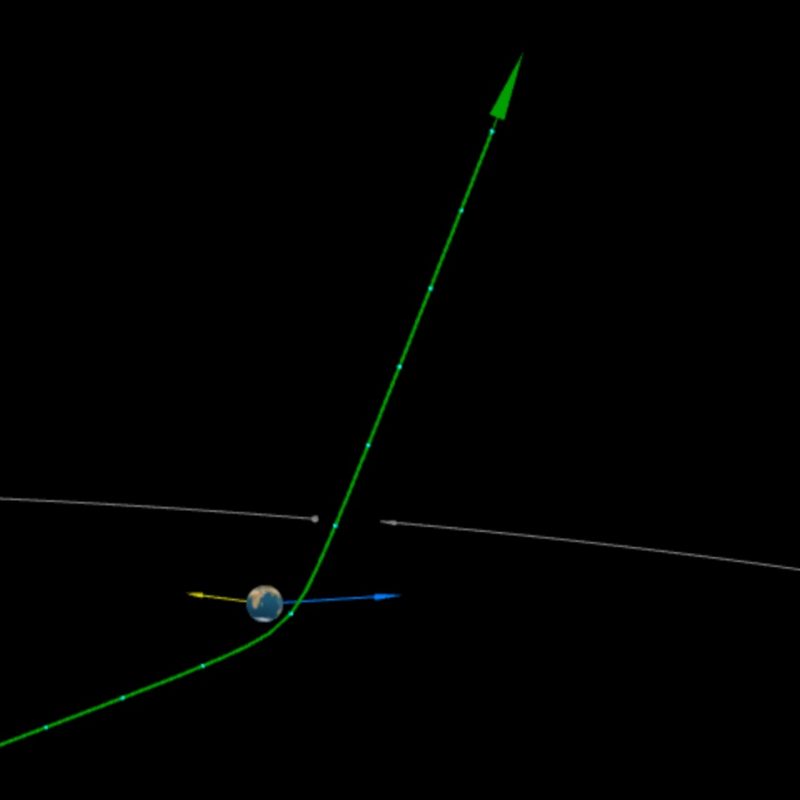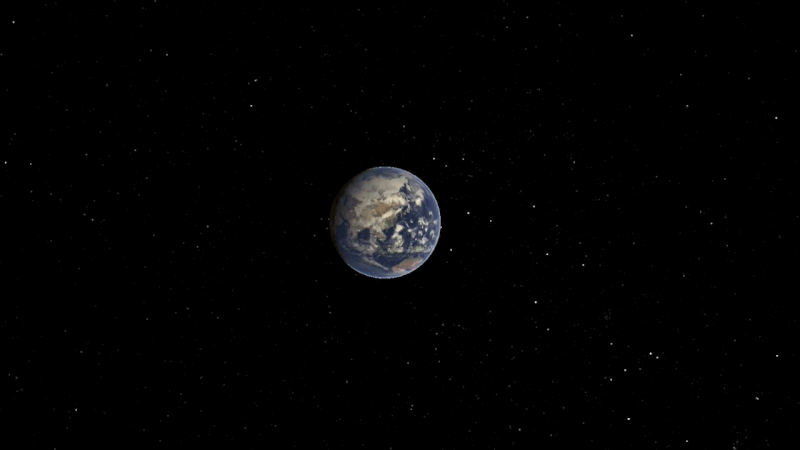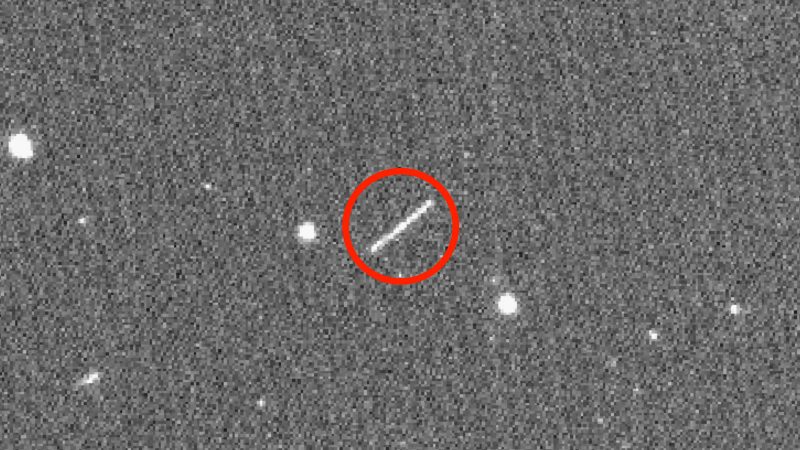
Newly discovered asteroid ZTF0DxQ – now officially labeled 2020 QG – swept about 1,830 miles (2,900 km) from Earth’s surface on Sunday, August 16, 2020, then zoomed on. It was moving at a speed of about 7.7 miles per second (12.4 km per second) or about 27,600 mph. Because it approached Earth from a sunward direction, it flew past us unseen at 04:08 UTC. Astronomers didn’t detect it until six hours later. This object now holds the record among known asteroids for having swept closest to us without striking us.
Should we be glad it didn’t hit us, or mad it wasn’t detected earlier? Neither one.
And here’s why: relatively speaking, this object is very, very small.

It was never going to harm us. Size estimates for objects of this kind are based upon the object’s observed brightness as seen from Earth. 2020 QG is thought to be about 10 to 20 feet (3 to 6 meters) across. That’s in contrast to the biggest asteroids, which are hundreds of miles across. And it’s in contrast to the small asteroid that created 2013’s famous Chelyabinsk meteor, which came even closer to us, entering Earth’s atmosphere over Russia. The Chelyabinsk meteor started out some 66 feet (20 meters) across. It created a gigantic shockwave that broke windows in six Russian cities, causing hundreds of injuries, mostly from flying glass. On the other hand, if an asteroid the size of 2020 QG does enter our atmosphere (and indeed they do, several times each year, according to NASA), the airburst it creates would be too high in Earth’s atmosphere to cause damage on the ground. What’s more, a 10- to 20-foot asteroid would either completely vaporize on its fall through the atmosphere, or drop as a small remnant of its former self – a rock from space, prized by meteorite hunters – onto Earth’s surface or into the ocean. So there was never any real danger of harm. In fact, astronomers appear to get a kick out of seeing tiny asteroids like 2020 QG come this close. Paul Chodas, director of NASA’s Center for Near Earth Object Studies, said in a NASA statement:
It’s really cool to see a small asteroid come by this close, because we can see the Earth’s gravity dramatically bend its trajectory. Our calculations show that this asteroid got turned by 45 degrees or so as it swung by our planet.
But what about that six-hour delay in astronomers’ detection of this asteroid? Cause for outrage? On the contrary …

Astronomers’ ability to detect asteroids far exceeds what it was. Diminutive asteroids the size of 2020 QG have been sweeping past Earth for billions of years. An asteroid this size couldn’t have been detected at all a few decades ago. In our lifetimes, asteroid-detection technology has greatly advanced. 2020 QG was found via a survey telescope – the Zwicky Transient Facility (ZTF) – on Palomar Mountain in California. It was found by a robotic system developed by some of the smartest people on the planet, who, for decades, have been working to protect Earth from possible destructive asteroid impacts. Go astronomers!
However, 2020 QG’s sweep past Earth on Sunday does point to a weakness in astronomers’ highly developed asteroid-observing abilities. That is, it’s hard for them to see asteroids that come at us from the direction of the sun. Paul Chodas commented to Dave Mosher and Morgan McFall-Johnsen of Business Insider:
There’s not much we can do about detecting inbound asteroids coming from the sunward direction, as asteroids are detected using optical telescopes only (like ZTF), and we can only search for them in the night sky. The idea is that we discover them on one of their prior passages by our planet, and then make predictions years and decades in advance to see whether they have any possibility of impacting.
Mosher and McFall-Johnsen also reported:
NASA has a plan to address these gaps in its asteroid-hunting program. The agency is in the early stages of developing a space telescope that could detect asteroids and comets coming from the sun’s direction.
NASA’s 2020 budget allotted nearly $36 million for that telescope, called the Near-Earth Object Surveillance Mission.
If funding continues, it could launch as early as 2025.
NASA said that, by some estimates, there are hundreds of millions of tiny asteroids the size of 2020 QG. They are extremely hard to discover until they get very close to Earth. The vast majority pass by safely at greater distances, usually, but not always, farther away than our moon.
Meanwhile, in 2005, Congress assigned NASA the goal of finding 90% of the near-Earth asteroids that are about 460 feet (140 meters) or larger in size. Clearly, the larger asteroids pose a larger threat. The good news is that they they can be detected much farther away from Earth. Once found, their orbits can be calculated years into the future, to determine any potential for a future collision. If an asteroid were found to be on a collision course with Earth, assuming it were found years before the collision was due to take place, the world could and surely would take steps to try to divert it.
Newly-discovered asteroid ZTF0DxQ passed less than 1/4 Earth diameter yesterday, making it the closest-known flyby that didn't hit our planet.@renerpho
Simulation: https://t.co/a81R100OwV
Higher-res GIF: https://t.co/4Wxn0YNpVb pic.twitter.com/SMtVRbjYOA— Tony Dunn (@tony873004) August 17, 2020
Bottom line: Asteroid ZTF0DxQ – now officially labeled 2020 QG – swept just 2,000 miles (3,000 km) from Earth’s surface, making it the closest-known asteroid flyby that didn’t involve a strike.











